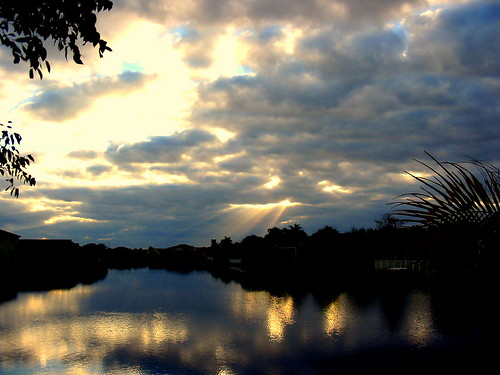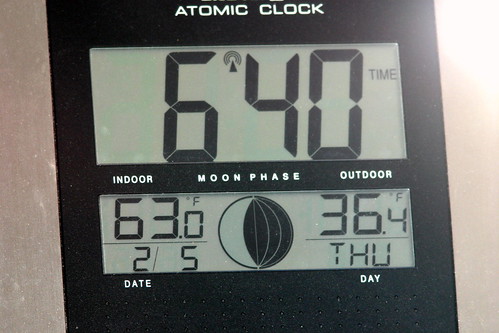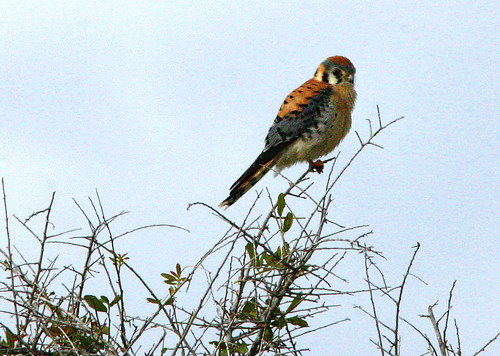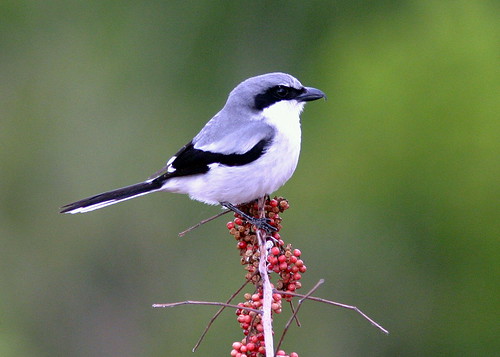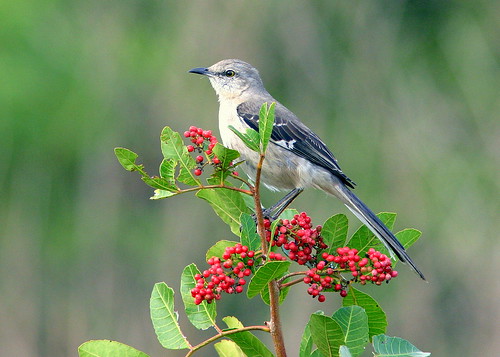Posted by: Ken @ 1:17 pm
This week felt more like winter than at any time since we started spending time in Florida, seven years ago. This morning’s sky had a wintry look, and the wind soon picked up, though by Chicago standards it was a balmy 58 degrees.
The day before yesterday, South Florida had its coldest day in six years, when the temperature dropped to the mid-30s:
Our local Bald Eagles seemed not to mind the cold. The chick(s) are three weeks old this weekend. Planned construction of a nearby traffic signal, which will entail excavation only about 200 feet from the nest, has not yet started. The Florida Fish & Wildlife Conservation Commission (FWC) has provided consultation to the contractor in an effort to minimize disturbance and possible nest abandonment, in the event that the Broward County School Board decides to proceed with the construction before the eaglets leave the nest. Since the Bald Eagles have been removed from the Endangered Species List, they are protected by State and Federal guidelines that recommend no unusual disturbance within 330 feet of an occupied nest. These guidelines do not have the force of law, and penalties occur only in the event that the eagles are “taken” (which means it must be proven that the construction caused them to be killed, injured, or abandon the nest).
Yesterday, as the adult preened at the nest, one downy eaglet popped its head above the rim (click on image for larger views):
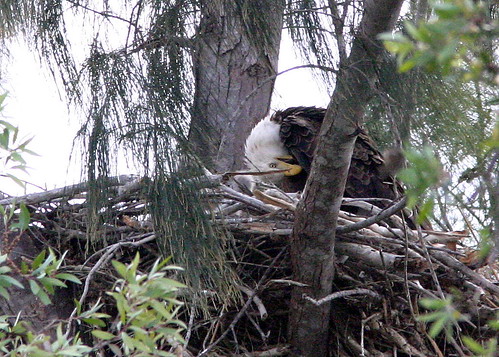
This morning, one adult stood watch:

The other adult brooded the (unseen) eaglets, just after feeding them: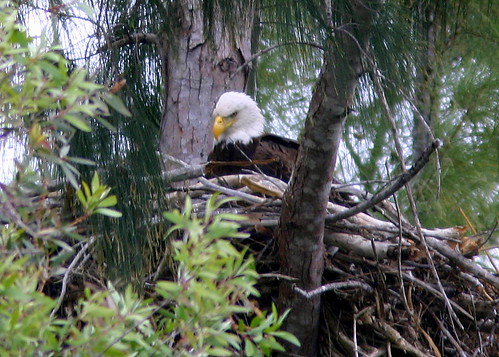
Earlier, in the brisk Northeast breeze, I walked the West Miramar Environmentally Sensitive Land (ESL), our local birding “patch.” The place had the look of winter. Grasses and sedges were brown, flowers were few, and butterflies were absent. The cypress trees had lost their needles, lending an air of barrenness to the scene. I looked for snakes, especially the Cottonmouths that often oscillate buoyantly on the surface of the water in the canal, and alligators, which like to bask on its banks, but found none. Far from barren, the waters of the canal, lowered by the dry season, harbored many fish.
There were few birds to be seen or heard. This American Kestrel lent some bright color:
A Loggerhead Shrike permitted me to walk by within about 25 feet:
As usual, Northern Mockingbirds were quite plentiful in dryer parts of the ESL:













